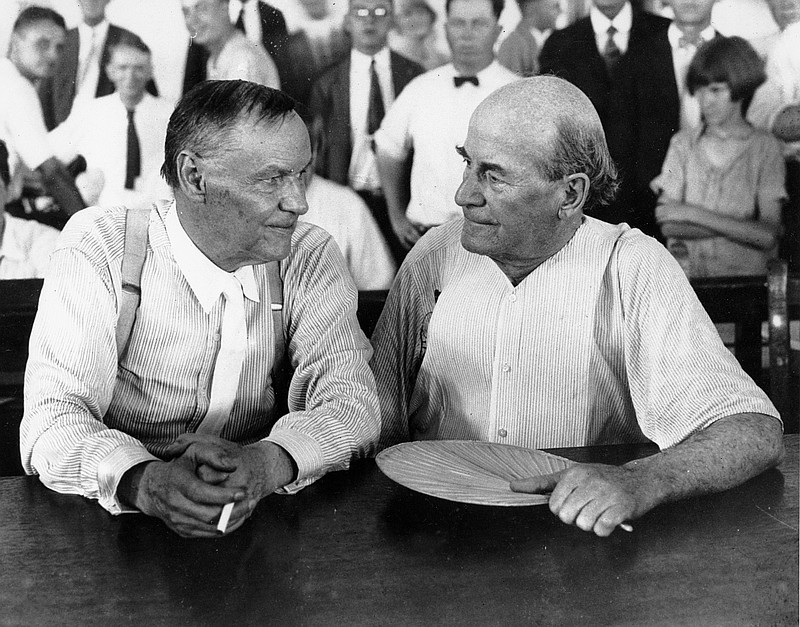NASHVILLE, Tenn. (AP) - The famed "Scopes monkey trial" pitted two of the nation's foremost celebrity lawyers against one another, but only one of them was memorialized outside the Tennessee courthouse where the landmark case unfolded -- until now.
On Friday at the Rhea County Courthouse in Dayton the public will behold a 10-foot statue of the rumpled skeptic Clarence Darrow, who argued for evolution in the 1925 trial. It will stand at a respectful distance on the opposite side of the courthouse from an equally huge statue of William Jennings Bryan, the eloquent Christian defender of the biblical account of creation, which was installed in 2005.
The trial that unfolded there nine decades ago garnered national headlines in what historians say started as a publicity stunt for the small town. Formally known as Tennessee vs. John Thomas Scopes, the case generated front-page headlines nationwide and was immortalized in songs, books, plays and movies. Dayton hosts its annual Scopes Trial festival for 10 days, starting Friday, featuring a theatrical production.
Historians say the trial came about after local leaders convinced Scopes, a 24-year-old high school teacher, to answer the American Civil Liberties Union's call for someone who could help challenge Tennessee's law that banned teaching evolution. He was found guilty but didn't spend time in jail.
Bryan, a three-time Democratic candidate for president, died just five days after the trial ended.
In Dayton, home of a Christian college that's named for Bryan, it's not hard to envision the community accepting a statue venerating the august champion of the faith.
But Darrow is another matter.
Rifts over evolution and creationism continue almost a century later, and the Darrow statue was requested by atheist groups.
Pockets of opposition in the town suggest many Christians still see the science of evolution as clashing with their faith. Dayton resident and minister June Griffin has led much of the backlash against the Darrow statue, citing religious contentions.
"This is a hideous monstrosity," Griffin said. "And God is not pleased."
Two weeks ago about 20 supporters and 20 protesters clashed peacefully at the courthouse over the statue, said Rhea County Sheriff's Department Special Projects Coordinator Jeff Knight.
Nevertheless, the Darrow statue hasn't drawn teeming crowds in Dayton like the ones that forced some of the 1925 trial proceedings to be moved outdoors.
Regardless of how people's beliefs differ, the statue helps represent history, said Rhea County historian Pat Guffey. Most people seem OK with it, she added.
"I just think that something that is history should stay, or should be put up, no matter what," Guffey said. "I don't think we should try to change history."
Philadelphia-based sculptor Zenos Frudakis crafted the new statue, funded largely by $150,000 from the Freedom from Religion Foundation. The group said the project would remedy the imbalance of Bryan standing alone.
"Bryan was there as an attorney, a prosecutor, and Clarence Darrow as a defense attorney. And now, the history has been restored," Frudakis said.
Frudakis, an admirer of Darrow, said the sculpture offers an honest look at the lawyer.
"He looks like he slept in his suit, which he often did. Sometimes his shirts were torn," Frudakis said of Darrow. "He smoked too much. He drank too much. He was a womanizer. I got as much of that as I could in the sculpture."
